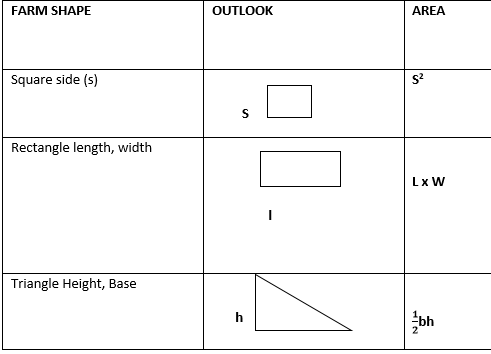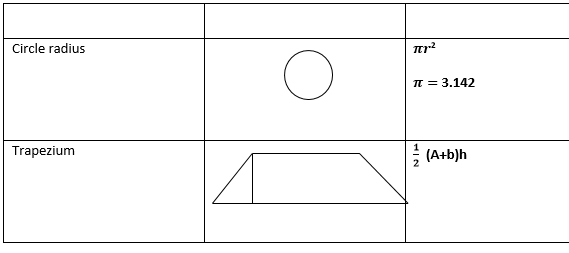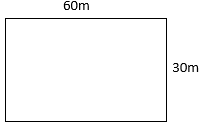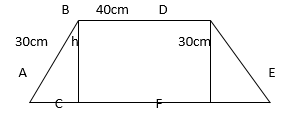MEANING AND IMPORTANCE OF FARM PLANNING
Farm planning is a drawing or outline of a farmstead. It also involves the proper land use planning, i.e., putting the land into use for which it is best suited without the risk of land degradation.
Importance of Farm Planning
- It enables the farmer to make proper use of the land.
- It also ensures the proper sitting of certain building or structures in certain locations within the farmstead.
- It ensures the location of the livestock building about other farm buildings.
- It promotes neatness and prevents pollution within the farmstead
FACTORS NECESSARY FOR PLANNING A FARMSTEAD
Definition of a farmstead: Farmstead can be defined as a farm house and all its production and processing structures. A farmstead is both a home and a production centre. In other words, a farmstead is the farmer’s dwelling place and production centre. Its planning is based on the system of farm, and on the need and comfort of the farmer’s family.
Factors Influencing the Siting of Farms or Farmsteads.
In planning a farmstead, the following factors must be considered.
Topography:
- Topography determines the location of farm buildings and structures.
- Farm building or living quarters are usually located on high elevations for proper viewing of the farm.
- Animal quarters should be located far from the staff living quarters
- Locate crops such as vegetables on low lying areas where moisture contents is high.
- Fish ponds are located on sloping grounds
- Irrigation farms are best sited on flat ground
Soil Type:
- Crop farms are sited on fertile soils
- Pastures are sited on less fertile soils
- Farms building,s and structures are best located on poor soils.
- Farm roads are best constructed on well-drained poor soils.
Accessibility
- Locate facilities within walking distance
- Provide good roads to facilitate the transportation of farm inputs
- Ensure easy accessibility and evacuation of farm produce.
- Good accessibility makes the marketing of farm produce possible.
Water supply
- An adequate water supply is needed for human and animal use
- Livestock structures should be located close to the source of water supply for easy cleaning
- Water is required for irrigation purposes.
Health/Hygiene
- Erect livestock units against the wind direction
- Locate animal units far away from human residential houses to avoid health hazards.
Nearness to Market
- Nearness to the market reduces distribution or transport costs.
- It exposes products to many buyers
- It reduces the need for farm storage.
Drainage
- Adequate drainage is important to avoid waterlogging
- Gentle slope facilitates proper drainage
- Good drainage makes movement easier within the farm.
Reasons for Planning a Farmstead
- It allows for proper utilization of resources without wastage.
- It makes the farmer to be more responsive to market demand.
- It encourages the efficiency of farm activities
- It makes coordination and control of farm operations easier.
PRINCIPLES OF FARMSTEAD LAYOUT
Some specific principles are required for farmstead layout, and these include:
- Plant the crops on the best soil within the farm.
- The livestock building should be located on the poorest soil within the farm.
- Buildings should be located in easily accessible areas.
- Farm buildings should not be located on slopes to avoid erosion.
- Residential and office buildings should be located far away from livestock buildings to avoid the noise and unpleasant odour from farm animal waste and dung.
CALCULATION OF AREA OF FARMLAND AND PLANT POPULATION
The shape and size of any farmland can be measured or determined by farm surveying. The area of farmland varies; some are rectangular, square, triangular, or even circular. The formula used in the calculation of farmlands and plant population includes:
- Area of farmland: This refers to the product of the length and width of the farmland measured in metres. Mathematically,
Area of Farmland = Length x Width (metres)2
i.e (L x W)m2
(b) Number of plant stands/plant population
This refers to the number of plants in an area of farmland. Mathematically,
Plant population = Area of farmland (m2)
Spacing (m2)
(c) Spacing: This is the distance between one crop plant and the next plant, which is usually between and within the rows, e.g., 60cm x 30;-100cm x 75cm, etc.
(d) Note: one hectare = 10,000m2. This figure means there are 10,000m2 in one hectare of are of farmland is given in hectare.
(e) Measuring the Area of Farmland: The shape and size of my farmland can be measured or determined by farm surveying. They are of farmland varies a already noted above.
Formulae for calculating the area of farmland are shown below.


Example 1: if the length and width of a farmland are 60m x 30m respectively, and the spacing of a tomato crop plant is 30cm x 30cm, calculate (a) the area of the farmland; (b) the plant population (tomato) in the give area; (c) the total population if there are two plants per stand.

Shape of a farm Land
SOLUTION
(a) Area of farmland = Length x Width
= 60m x 30m = 1800m2
(b) Spacing of crop = 30cm x 30cm or 0.3m x 0.3m
Area of 1 stand of crop=0.3m x 0.3m = 0.09m2
No of stand/crop = Area of farmland(m2) = 1800m2 = 180,000
Spacing (m) 0.09m2 9
= 20,000 crop stands
The plant population (tomato) is 20,00 stands.
(c) Since there are two plants per stand, the total plant population = 20,000 x 2 = 40,00 tomato plants
The total population 40 000 tomato plants.
Example 2: A school farm in Lagos State was surveyed and presented in a map as shown in the diagram below. Use it to answer the following questions.

- What is the approximate area of the farm?
- If the farmland is used for pineapple production at a spacing of 2.5m x 2m, what will be the initial population of pineapple trees in the farm?
- If 8% of the pineapple plants were damaged by pests, what will be the final pineapple plants in the farm?
Solution
- Use the formula of a trapezium to solve this problem?
Area of farmland = (BD + AF) x h
But first, find or calculate h, using Pythagoras’ theorem
h(BC)2 = AB2– AC2 = 302 – 152 900-225 = 675cm.
h(BC) = = 25.9m = 26m. (Approx)
Area of farmland = (40 + 70) x 26
= (110) x 26
= x 2, 860 = 1, 430m2
Area of farmland = 1,430m2
- Population of pineapple trees =
= = = 286 pineapple plants
- x = 22.88 = 23pineapple plant damaged
Pineapple plants available in the farm = 286-23 = 263.
Final pineapple plants remaining = 263
Questions:
- What is farm surveying
- State five surveying equipment
- What is a farm layout
- State five objectives of surveying
